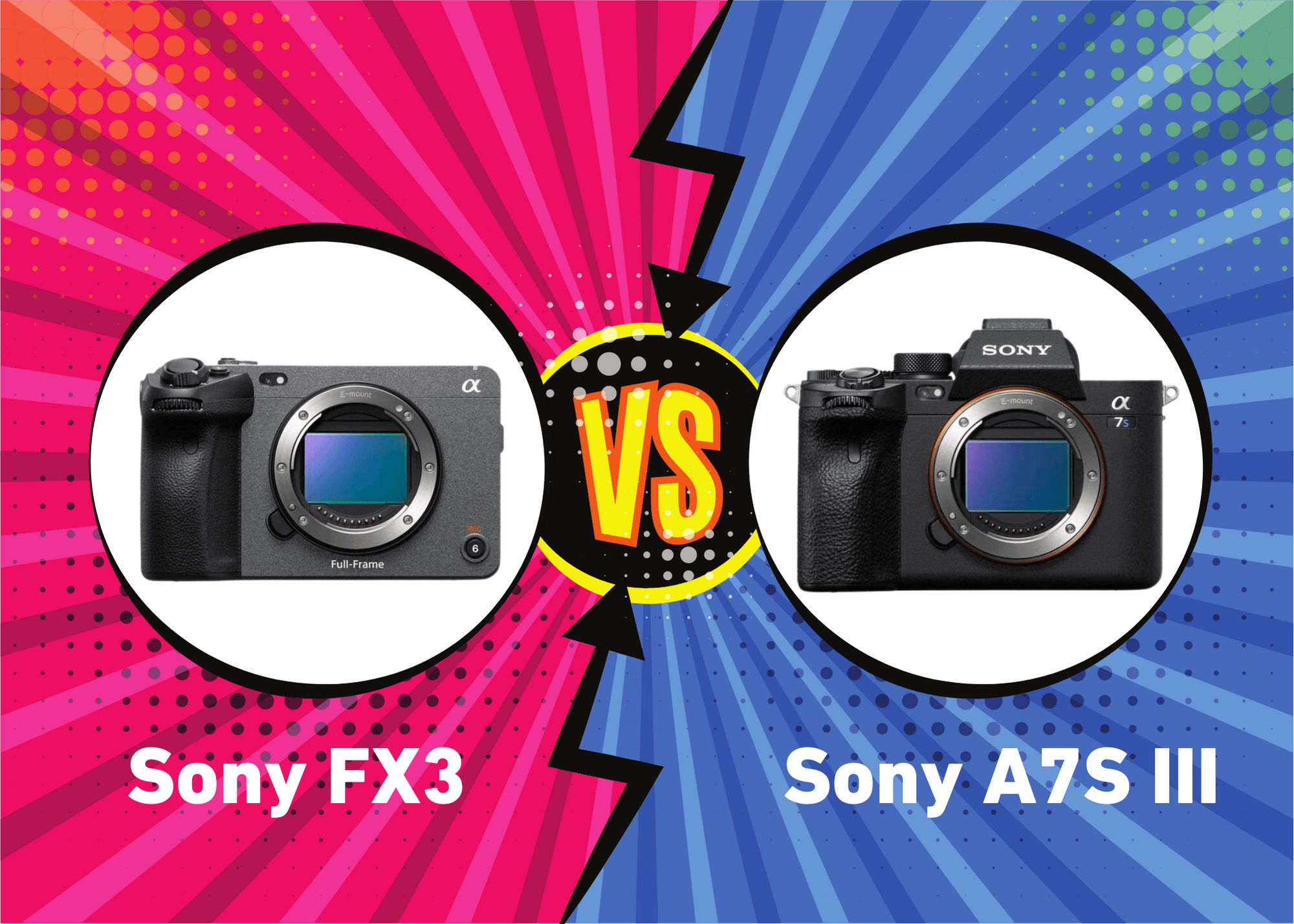Whether you shoot video or you're getting ready to jump in, you've probably looked around to see what other people are shooting—and you've probably seen a lot of Sony out there. Which inevitably leads you to the question: Which Sony camera would best suit my video needs? Sony A7S III vs FX3?
The FX3 comes from Sony's cinema line, and the A7S III is one of Sony's top-notch mirrorless cameras, often chosen for its excellent video quality. After this article, you'll find that these two popular cameras are very similar, and we'll highlight the key differences to help you decide which one is right for you.
First, let's compare the features side by side:
What's the Same
|
|
||
|
|
||
|
Sensor Type |
Full-frame, 12.1MP CMOS |
|
|
Native ISO |
80-102,400 |
|
|
Expanded ISO |
80-409,600 |
|
|
Dynamic Range |
15 Stops |
|
|
Autofocus Tracking |
Yes |
|
|
Storage |
2 Dual Compatible CFexpress Type A or SD (UHS-II) |
|
|
Image File Format |
Stills: JPEG, HEIF, ARW (RAW) / Movies: XAVC S, XVAVC HS |
|
|
Image Stabilization |
5-axis IBIS |
|
|
Recording Limit |
Unlimited |
|
|
Video Max Resolution |
4K/120fps |
|
|
Slo-Mo Video |
FHD/240fps |
|
|
Audio Recording |
Built-in stereo microphone, optional external stereo microphone |
|
|
Headphone Jack |
Yes |
|
|
LCD Type |
3” Articulating Touch Screen |
|
|
GPS |
Geo-tagging via phone app |
|
|
Wi-Fi |
Yes |
|
|
Bluetooth |
Yes |
|
|
Battery Life |
Up to 135 mins with LCD |
|
|
Battery Type |
FW-Z100 |
|
|
Weather-Sealed Body |
Yes |
|
|
USB Version |
USB-C |
|
What's Different
|
|
||
|
|
||
|
XLR Audio Handle |
Yes (included) |
No |
|
Viewfinder |
N/A |
Yes |
|
Accessory Mounts |
Hotshoe, 6 x 1/4"-20 Male Mounts |
Hotshoe |
|
Cooling |
Internal fan for active cooling |
No fan; passive cooling |
|
Weight |
1.66lbs |
1.35lbs |
|
MSRP Price |
$3,899.99 |
$3,499.99 |
Both the FX3 and A7S III will take photos and video, but with 12 MP, the video will be your main reason for choosing either. Fewer megapixels mean bigger megapixels, which translates to fantastic capability in low-light situations. Here's a fun fact: you don't need a ton of megapixels to shoot video. 4K video only uses 4,000 pixels, and with 12 MP, you have 12 MILLION pixels. So, no worries there; you're good to go. You'll be more limited in your photography output with only 12 MP.
Sony FX3 Review - FX3 Footage, Audio, Top Handle, Color Profiles
The quality of your video will be very much the same with either camera, so let's talk about the differences. For $400 more, the FX3 gives you more options to rig out your camera—that is, to attach the equipment specific to shooting video. The XLR Audio Handle comes with the FX3. If you're looking to record your audio track internally, you might want to buy one of these anyway for the A7S III—probably the Sony XLR-K3M Dual-Channel XLR Audio Adapter Kit which comes with a shotgun mic, for $599.
The FX3 also has 1/4" -20 mounting threads on the camera body and audio handle, allowing you to attach accessories without a cage. One day you might find that you need a cage, but you'll reap the benefits of working with a less-bulky setup if you don't. It's nice to run and gun without juggling too many extra pieces.
You scratch a couple of other video itches when you choose the FX3.
It has an internal fan for active cooling and tally lights to indicate when you're recording. (Nice to have! People like these!) The A7S III doesn't overheat quickly, but with the fan built into the FX3, it's one less thing that can hold you up on set.
I've focused on the FX3's perks, but don't get me wrong; the A7S III is well-respected in the world of video. Many videographers still use it for an A or B camera. If the option to shoot photos is of the slightest bit of importance to you, the A7S III is physically more versatile. It's lighter smaller, and it has an electronic viewfinder, so you can frame your shot perfectly even when conditions are too bright to see the LCD screen.
When it comes to choosing either the the Sony FX3 or the A7S III for video, you'll want to go into this, picturing your overall rig and considering how much you'll want (or need) to spend on your other equipment. Picture yourself using the camera and the sets on which you're likely to be shooting. For these two cameras, the deciding factor will be practicality. You'll get the same high-quality Sony 4K video out of either one.














